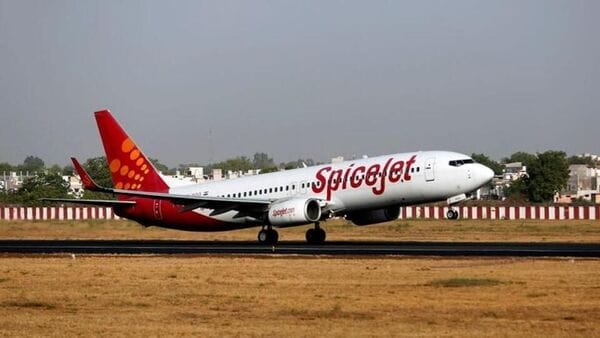SpiceJet Expands Fleet Amid Financial Challenges
Despite posting significant losses and facing auditor concerns about its survival, SpiceJet is aggressively expanding its fleet and route network. The airline recently added 15 aircraft in just 30 days, bringing its active fleet to 35 planes as it aims to triple capacity and compete for market share.
Key Takeaways
- SpiceJet reported Q2-FY26 loss of ₹635.42 crore while expanding operations
- Active fleet grew to 35 aircraft with 14 wet/damp leases
- Aiming for 250 daily flights, 2.5x September levels
- Auditor cites accumulated losses of ₹8,637.9 crore as major concern
Rapid Network Expansion
Data from aviation analytics firm Cirium shows SpiceJet’s dramatic growth at major Indian airports. Weekly departures from Delhi will jump from 144 to 276, while Mumbai will see an increase from 68 to 185 flights. Significant expansion is also planned for Chennai, Kolkata, and Ahmedabad.
Internationally, the airline has added Kathmandu and Phuket to its network, alongside temporary flights to Najaf and Fujairah.
Dubai: The Crown Jewel
Dubai remains crucial to SpiceJet’s survival strategy with its legacy allocation. Even when the airline was operating only 100 flights, Dubai was its second-largest station after Delhi. The carrier currently connects Dubai with nine Indian destinations.
International operations constitute 19.8% of SpiceJet’s network by Available Seat Kilometers, slightly higher than IndiGo’s 19.51%, though IndiGo operates at a much larger scale.
Financial Health Concerns
The airline’s auditor has repeatedly expressed “significant doubt” about SpiceJet’s ability to continue operations. Current liabilities exceed current assets by ₹4,277.3 crore, with negative net worth standing at ₹2,801.9 crore – substantially worse than the ₹630 crore negative net worth during its 2014 crisis.
Operational Challenges
SpiceJet’s reliance on wet and damp leases increases operational costs, requiring frequent aircraft rotations to match India’s seasonal demand patterns. The recent appointment of Sanjay Kumar as Executive Director brings experienced leadership, but fleet modernization requires substantial capital investment.
The ultimate challenge remains cash flow generation. While additional aircraft boost revenue and market share, sustainable profitability depends on the airline’s ability to generate surplus cash to settle obligations and fund growth.




